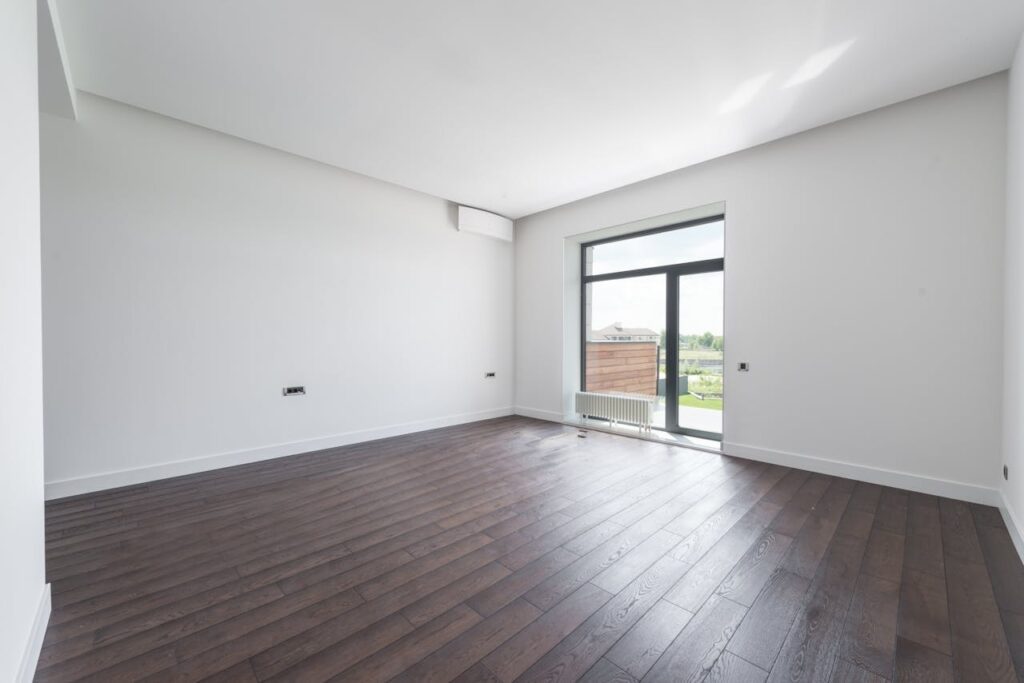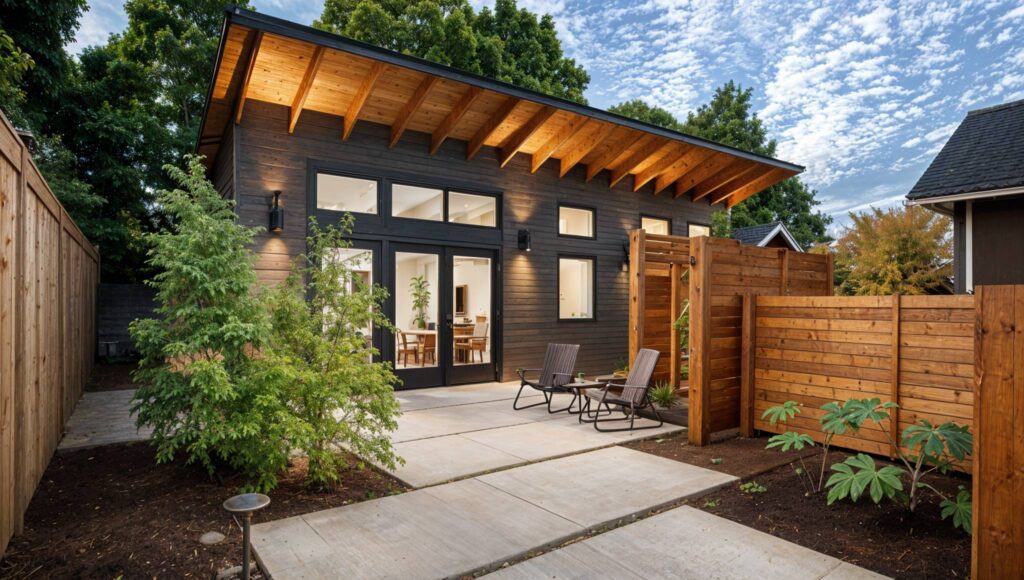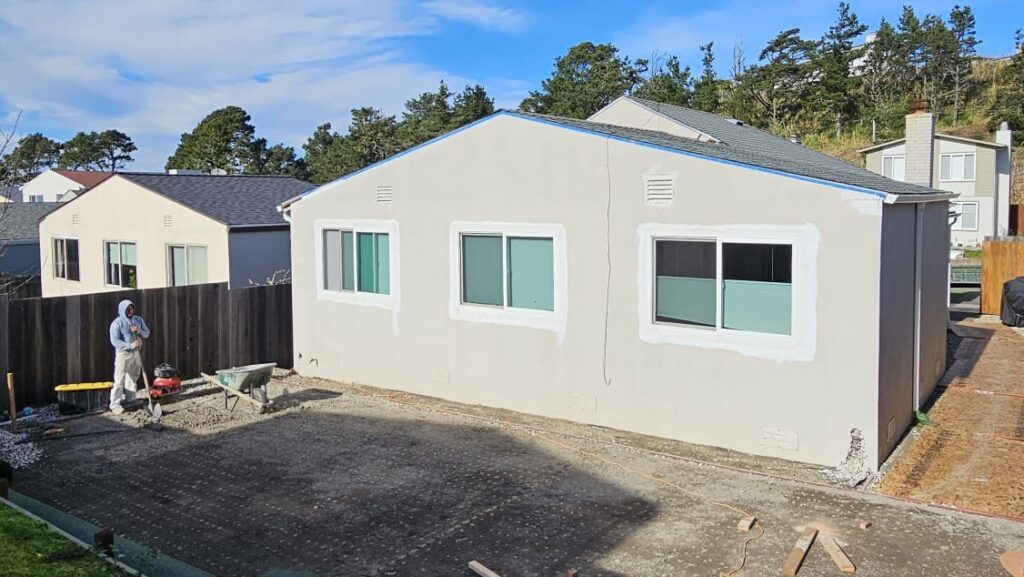Exploring the top 5 materials for constructing an ADU for your home office is crucial in creating a functional and inspiring workspace. From traditional wood to modern steel, each material brings unique benefits to enhance your ADU’s durability and aesthetics. By understanding these materials’ characteristics, you can make informed decisions that align with your style and budget. Whether you prefer the timeless charm of brick or the sleek look of concrete, choosing the right material is key to crafting a productive home office sanctuary.
1. Sustainable Wood (e.g., Engineered Wood or Timber)
Engineered Wood
Engineered wood is a popular choice for building ADUs due to its sustainability and cost-effectiveness. It is made by binding together layers of wood veneers, creating a strong and durable material. This type of wood is less prone to warping and cracking, making it ideal for various climates.
Engineered wood offers environmental benefits as it maximizes the use of timber resources. By using smaller pieces of wood, it reduces waste and promotes sustainable forestry practices. Its uniformity in size and shape allows for precise construction, ensuring a smooth installation process.
Timber
Timber is a classic option for constructing ADUs known for its natural beauty and timeless appeal. It provides a warm and inviting atmosphere to any space while offering excellent insulation properties. Timber structures are sturdy and long-lasting, standing the test of time with minimal maintenance required.
One of the key advantages of using timber is its renewability. As a natural resource, timber can be sustainably sourced from responsibly managed forests, contributing to carbon sequestration. Furthermore, timber is a versatile material, allowing for various design possibilities to suit different architectural styles.
Bamboo
Bamboo is gaining popularity as a sustainable alternative for building ADUs due to its rapid growth rate and eco-friendly properties. This fast-growing grass reaches maturity within 3-5 years, making it an abundant and renewable resource. Bamboo’s strength rivals that of steel, providing durability and stability in construction.
Using bamboo in ADU construction helps reduce the reliance on traditional hardwoods, thus preserving forests and promoting biodiversity. Its natural resistance to pests and mold makes it a low-maintenance option for homeowners. Bamboo’s aesthetic appeal adds a touch of elegance to the overall design.
Recycled Materials
Incorporating recycled materials like reclaimed wood or metal into ADU construction offers both environmental benefits and unique aesthetics. Reusing materials reduces waste sent to landfills and minimizes the demand for new resources. Recycled materials also add character and charm to the ADU, creating a one-of-a-kind space.
Utilizing recycled materials showcases a commitment to sustainability while adding personalized touches to the ADU. From reclaimed barn wood flooring to salvaged metal roofing, these elements contribute to a green building approach, aligning with eco-conscious trends in modern construction.
2. Steel or Metal Frame
Durability
Steel or metal frames are renowned for their exceptional durability. They provide a robust foundation that can withstand various environmental conditions. This durability ensures that your ADU remains structurally sound for years to come.
Strength
One of the key advantages of using steel or metal frames is their impressive strength. These materials offer superior load-bearing capabilities, making them ideal for supporting multi-story ADUs or heavy equipment within the structure.
Customization Options
Steel or metal frames provide versatile customization options for your ADU. You can easily modify the frame to accommodate specific design preferences or structural requirements. This flexibility allows you to create a tailored space that meets your unique needs.
Cost-Effectiveness
While steel or metal frames may have a higher initial cost compared to other materials, they offer long-term cost-effectiveness. The durability and low maintenance requirements of these frames result in reduced repair and replacement costs over time, making them a wise investment for your ADU project.
Eco-Friendly Features
Steel and metal frames are eco-friendly options for building your ADU. These materials are often made from recycled content and can be recycled at the end of their lifespan, reducing environmental impact. By choosing steel or metal frames, you contribute to sustainable construction practices.
3. Insulated Concrete Forms (ICFs)
Durability
Insulated Concrete Forms (ICFs) are known for their exceptional durability. They provide a sturdy structure that can withstand harsh weather conditions and offer long-term stability.
ICFs are made of reinforced concrete, ensuring a robust foundation for your home office. This material is resistant to rot, mold, and pests, increasing the lifespan of your ADU.
Energy Efficiency
One key benefit of using Insulated Concrete Forms (ICFs) is their excellent energy efficiency. The insulating properties of ICFs help regulate indoor temperatures, reducing heating and cooling costs significantly.
ICFs create a tight thermal envelope that minimizes air leakage, making your home office more comfortable throughout the year while lowering energy bills.
Sustainability
When considering materials for your ADU, sustainability is crucial. Insulated Concrete Forms (ICFs) are an environmentally friendly choice. They reduce energy consumption and minimize waste during construction.
ICFs are often made from recycled materials, contributing to a greener building process. By choosing ICFs, you can reduce your carbon footprint and promote eco-friendly practices.
4. SIP Panels (Structural Insulated Panels)
Energy Efficiency
SIP panels, consisting of a foam core sandwiched between oriented strand board, are known for their exceptional energy efficiency. They provide superior insulation, reducing energy consumption and ensuring cost savings in the long run.
Quick Installation
One of the key advantages of SIP panels is their quick installation process. Due to their large size and simple design, they can be installed faster than traditional building materials. This speeds up the construction timeline, allowing homeowners to enjoy their ADU sooner.
Sustainability Benefits
SIP panels are also environmentally friendly, as they are often made from renewable materials. Their high energy efficiency contributes to lower carbon emissions, making them a sustainable choice for eco-conscious individuals.
5. Recycled or Composite Roofing Materials
Sustainable Options
Recycled or composite roofing materials offer environmentally friendly choices for ADU construction. These materials are made from recycled products like plastic, rubber, or wood fibers. They provide durability and energy efficiency while reducing waste.
Benefits of Recycled Roofing
- Eco-friendly: Reduces the demand for new raw materials.
- Longevity: Offers a long lifespan compared to traditional roofing materials.
Composite roofing is a popular choice due to its resilience against harsh weather conditions. It combines various materials like rubber, plastic, and wood fibers to create a sturdy and durable roof. This type of roofing is known for its low maintenance requirements, making it an ideal option for ADUs.
Composite Roofing Advantages
- Weather Resistance: Withstand extreme weather conditions.
- Energy Efficiency: Provides insulation, reducing energy costs.
Using recycled or composite roofing materials for your ADU not only contributes to sustainability but also ensures a long-lasting and robust structure. These materials are designed to withstand the test of time while offering aesthetic appeal and functionality.
Closing Thoughts
In crafting your ADU for a productive home office, consider the top 5 materials highlighted: Sustainable Wood, Steel or Metal Frame, Insulated Concrete Forms (ICFs), SIP Panels, and Recycled or Composite Roofing Materials. Each material offers unique benefits that can enhance the durability, sustainability, and efficiency of your space. By selecting these materials thoughtfully, you can create a workspace that not only meets your needs but also contributes to a greener environment.
Make informed choices when selecting materials for your ADU to ensure a comfortable and eco-friendly home office setup. Your selection can impact not only your immediate workspace but also the broader ecosystem. Choose wisely to create a space that aligns with your values and enhances your productivity.
Frequently Asked Questions
1. What are the benefits of using Sustainable Wood for building an ADU?
Using sustainable wood like Engineered Wood or Timber ensures durability, eco-friendliness, and a natural aesthetic for your ADU. It’s a renewable resource that contributes to a healthier environment while providing structural strength.
2. Why should I consider a Steel or Metal Frame for my ADU construction?
Steel or metal frames offer exceptional strength, durability, and resistance to pests and fire. They provide stability and can withstand various weather conditions, ensuring a long-lasting structure for your home office.
3. How do Insulated Concrete Forms (ICFs) benefit an ADU project?
ICFs offer superior insulation properties, energy efficiency, and soundproofing capabilities for your ADU. They create a durable and resilient structure that helps reduce energy costs and maintains a comfortable environment within your home office.
4. What advantages do SIP Panels (Structural Insulated Panels) bring to an ADU construction?
SIP Panels provide quick installation, excellent insulation, and reduced energy consumption for heating and cooling. They offer a strong and efficient building envelope that enhances comfort and sustainability in your home office space.
5. Why choose Recycled or Composite Roofing Materials for an ADU roof?
Recycled or composite roofing materials are environmentally friendly options that reduce waste and promote sustainability. They offer durability, weather resistance, and a unique aesthetic appeal while contributing to the green initiatives of your home office project.
Elevate Your Home with Red White & Blue Construction!
Thinking about framing solutions for your house? Look no further! Embark on a transformative journey where your home in Lafayette, CA, becomes the sanctuary you’ve always dreamed of. With Red White & Blue Construction, every wall and corner is meticulously framed to ensure your house is as structurally sound as it is beautiful. Dive into advanced framing techniques that provide the perfect foundation for your home, or explore innovative designs that maximize space and enhance functionality. Our reputation in the Bay Area stands as a testament to our commitment, expertise, and the unparalleled standards we uphold. We’re more than just licensed contractors; we’re the architects of your dream home. With our transparent pricing and exceptional client engagement, you’re not just building; you’re reimagining, redefining, and revitalizing your space. Choose Red White & Blue Construction. Craft the next chapter of your home story. Frame Your Home with Excellence and reach out to us today!
Disclaimer
The materials available on this website are for informational and entertainment purposes only and not to provide advice. You should obtain advice concerning any particular issue or problem from a professional. You should not act or refrain from acting based on any content included in this site without seeking legal or other professional advice. The information presented on this website may not reflect the most current building developments. No action should be taken in reliance on the information on this website. We disclaim all liability concerning actions taken or not taken based on any or all of the contents of this site to the fullest extent permitted by law.





